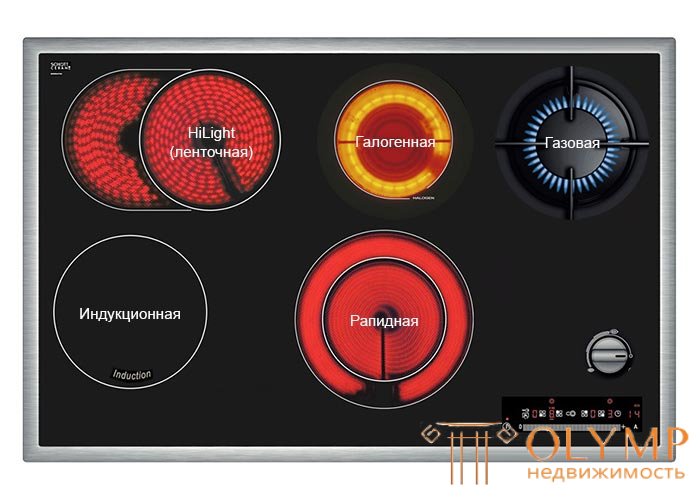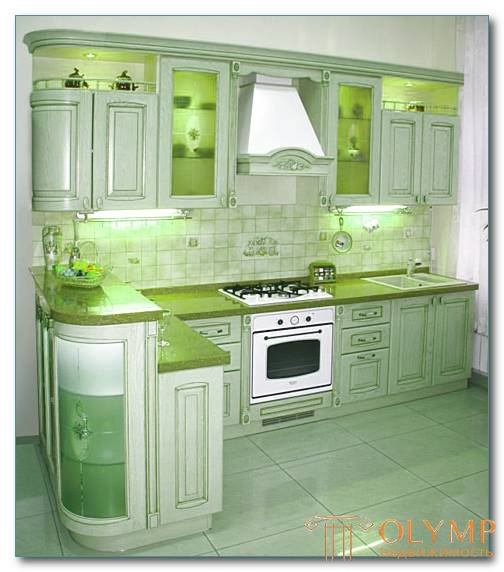
Today there is a huge variety of different appliances for the kitchen, among which also a wide variety can be distinguished various types of cooking stoves.
This is one of the most sought-after appliances in the kitchen, because thanks to it you can cook the various and most complex dishes. Although now there are various appliances that can replace the stove, but still the leading place in the kitchen still belongs to it. Maybe this is connected not so much with its functionality, as with the habit and convenience based on this habit. After all, modern multicookers, steamers, various types of stoves appeared quite recently and people have not had time to get used to them as much as they got used to the stove for many years.
Modern kitchen stoves in their technological features have gone far ahead of their predecessors. Completely new species have appeared, and traditional gas and electric have improved significantly.
1. type of energy (natural gas, liquefied gas, electricity)
2. The visible elements and the number of comforters (2,3,4 ...) (gas comfort, rapid, tape or HiLight, halogen, induction.)
3. temperature adjustment (mechanical, digital)
4. the presence or absence of the oven (if it is, then the number of baking trays is 2.3 ...)
5. the presence of lighting, convection (hot air), pyrolytic cleaning (type of cleaning itself), skewer, grill (infrared, TEN), microwave function
6. safety (door with double glass, gas control oven, residual heat indication). Gas stoves are cheaper to operate than electric cookers, but they are much more dangerous because they emit carbon monoxide when burning and there is a risk of gas exploding.
7. reliability, durability, warranty period (cooking surface material is stainless steel, glass-ceramic, enamel),
8. width, length, height, volume of the oven, maximum power consumption
9. control technology (mechanical, digital through mechanical controls, sensory)
10. manufacturer. almost irrelevant. because the goal of any manufacturer is to constantly sell new, otherwise it will be left without orders, and therefore the effort and time to failure is incorporated from the very beginning into the slab and is often not indicated in the product specifications and does not exceed a couple of years; the maximum period is 10-15 years. It is necessary to pay attention to the materials and technologies used in the furnace and the warranty period and conditions, and not to the marketing brand.
11. maintainability, availability of spare parts (heating element, glass-ceramic coating, glass for the cabinet, etc. ...)
All cookers can be divided into three large groups, which are primarily related primarily to the design and method of heating.
But it is also worth noting that in almost all three there are two additional types - these are traditional ones, standing by themselves in the headset, in the kitchen. In principle, for cooking traditional stove does not need the kitchen itself.
The oven is placed in a separate module.
Another thing is the built-in types of cookers, which are embedded in one (or two) of the modules in the process of installing the kitchen unit. Why two? By the fact that the embedded type of plates, is divided into two parts:
That's why for embedded types of cookers, the suite itself is absolutely necessary.
Let's take a closer look at the features and characteristics of each type of slab mentioned above.
From the point of view of electrical equipment, an electric stove is a heating electrical system.
By the type of heating they can be divided into the following types:

By the design of the heating surface can be divided into electric cooking stoves: ceramic and cast iron heating hob
Ceramic view of cooking stoves
They are both traditional and embedded. This type of plates appeared relatively long ago and is becoming increasingly popular. This is so to say a new level for kitchen appliances, today they are very fashionable in the first place the look looks very modern, and secondly they have practical advantages:
The disadvantages of electric ceramic types of plates
Among the ceramic plates is to provide induction. Their main feature is that when cooking, their ceramic (glass) surface does not heat up, but the dishes immediately heat up.
In order to choose a gas stove, you do not need to know many subtleties as when choosing electrical. The main feature of gas types of cookers is that in their design there is a special grid stand,  which raises the dishes in which food is prepared above the fire at a certain optimum height.
which raises the dishes in which food is prepared above the fire at a certain optimum height.
Modern types of gas stoves almost all are equipped with a system that allows you to protect against possible gas leakage, which makes this type of stove more secure. Pay attention to that under the control of this system included not only the cooking part, but the oven.
All modern gas stoves are equipped with electric ignition system, which simplifies its inclusion. To do this, no longer need matches.
This kind of hybrid that combines gas and electric cooking. The convenience of such stoves is that if there is a gas supply or electricity supply in your house in the system and they are temporarily de-energized, you will have an alternative and you can still cook food.
They are quite rare, since they have not gained popularity with the consumer, with which it is not known. maybe with a not very nice view of the upper part, or maybe there is simply no need for them, since problems with the supply of gas and electricity rarely occur.
Что бы оставить комментарий войдите
Комментарии (0)